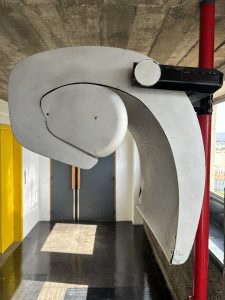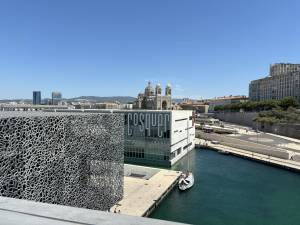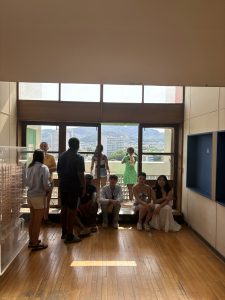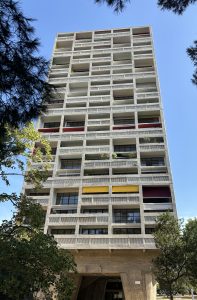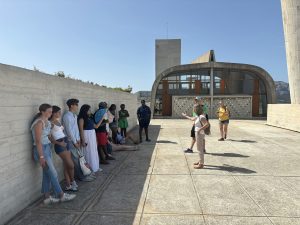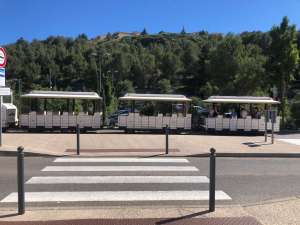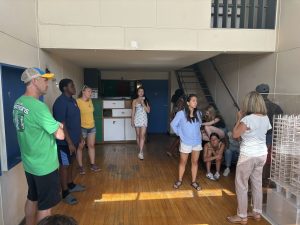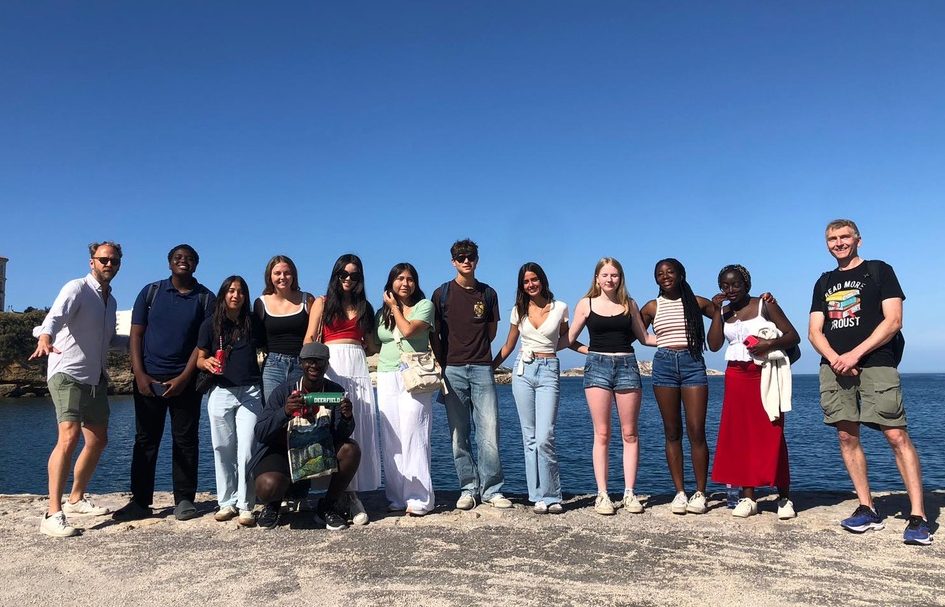Vivian ’25, describes the differences between Arles and Marseille, and recounts the groups various activities during their time in Marseille.
Marseille was a big switch from Arles: new faces everywhere, roommates instead of host families, and a big lively city instead of the smaller, homey place we spent three weeks in. For our first night, we started off by eating our own dinner in small groups, which ranged from McDonald’s to Bao Buns to moules frites. Despite them not being very French, the flavor had a unique twist to it different from the United States. With a new check in time at 10 pm, we all decided to explore as much as we could with our additional three hours of discovery.
The following morning we ate breakfast at the hotel. The menu offered great options, including fresh orange juice squeezed on the spot, chocolate croissants, yogurt, and bacon. After eating, we headed to Mucem. As we walked there, I noticed that the place reminded me a bit of Manhattan, with the tall buildings and constant cars; however, this place had a more antique and European style, and had a boat dock in the center of it which lead to the sea, the tramway runs on the streets of Marseille with its tracks built into the ground.
As we approached it, we saw in close proximity the beauty of La Cathédrale de la Major, and a ginormous orange bear. Once we were in front of Cosquer, we were informed it was closed for the day due to technical problems, but we believed it was a sign to go visit the art in Mucem. The history and art in various forms, such as statues, paintings, light, short animations, mirrors, photography, and Snoop Dog. It was beautiful.
After exploring on our own time other places of the city, we later regrouped at the hotel to head to our next destination: Notre Dame de la Garde. Taking the little train to get up there, we saw mountains, the Mediterranean sea, the city, and the islands nearby. Once at the top, we enjoyed the breathtaking view at the top of Marseille, and indulged in the art of historical aspects of the church.
For our last trip of the day, we went to see some street art in Cours Julien. Every wall and space was filled with art, and according to Dr. Hunt, several artists have visited just to paint their art.
—
On the following and final full day, we went to Cité Radiuese. Having our wonderful tour guide, we entered one of the apartments, where we were met with the sun’s rays that served as a main source of light. The main floor contained a small but well-organized kitchen, a living/dining area with built-in seating, and a balcony that overlooked the surrounding buildings. Upstairs there were three bedrooms, two sharing a wall that could slide to connect them, the other one having its own personal bathroom and even a built-in diaper station. We were informed that these apartments were made after World War II due to many children and families ending up without a roof to live under after their houses were bombed. Apart from the apartments, there were stores that sold pastries and groceries, a laundry place, library, and even a daycare and preschool with a pool located at the top of the building for all the kids to play in. The architect, Le Corbusier, behind all of it utilized his own form of measurement by using a body instead of the imperial or metric system. It can be argued that they thought of almost everything—even the cost of living there. To make it more affordable, they utilized plywood as a component to most shelves and doors.
As we parted and took a last look at the colorful windows, headed to the boat dock and rode a boat all the way to Frioul, one of the islands near the city. Almost 90 degrees, it was a perfect place to go to to jump into the nice cool water. Once at the island, we split into groups and headed to different parts of the cool, salty water. The replacement of sand with rocks allowed us to have a crystal clear view of the ocean floor. The only thing I regretted was not bringing my goggles!
